5 CV Tips That Help Care Givers Get Hired Faster
In South Africa’s competitive caregiving job market, having a well-crafted CV isn’t just a formality, it’s your first opportunity to show potential employers that you’re reliable, experienced and ready to make a difference in someone’s life. Whether you’re looking for a role in elder care, home-based assistance, nursing services, or support for individuals with special needs, a standout CV can fast-track your journey to employment.
With our years of expert staffing solutions, we know exactly what recruiters and families are looking for when they scan through applications. In this blog post, we’ll unpack five powerful CV tips that can help South African caregivers get hired faster and more confidently.
1. Highlight practical experience that speaks volumes
When it comes to caregiving, hands-on experience is everything. Employers want to know that you’ve worked with real people in real situations. Whether you’ve worked in a private home, hospital, old age home or a community-based organization, detail those experiences clearly.
What to include
- Where you worked – Name of the facility or client (if permission was granted).
- Type of care provided – e.g., elder care, palliative care, disability support.
- Length of service – Include start and end dates.
- Key responsibilities – Personal hygiene, meal prep, administering medication, mobility support, etc.
Pro tip from MASA
Always use action words like “assisted,” “supported,” or “monitored” to describe your tasks. It shows confidence and clarity.
2. Customise your CV to match the specific caregiver role
This step is absolutely critical and often the difference between getting shortlisted or being passed over. In the caregiving profession, one size does not fit all. Every client has unique needs and employers are searching for someone who fits those requirements closely. Whether the role involves supporting a child with autism, providing palliative care or assisting elderly clients in a care home, tailoring your CV to reflect the specific demands of the job shows that you’ve read the posting, understand the expectations and are genuinely interested.
A generic CV sends the wrong message, it suggests a lack of effort or understanding. On the other hand, a well-tailored CV signals professionalism, precision and commitment to delivering personalised care.
Steps to tailor your CV effectively
- Study the job advertisement thoroughly – Highlight key phrases or specific qualifications the employer is looking for (e.g., “dementia care,” “mobility assistance,” or “emotional support”).
- Match your experience – Reflect back similar experiences and responsibilities you’ve handled, using the same or related terminology.
- Align your skills – Prioritise skills that match the job requirements and present them clearly under the skills or core competencies section.
Real-world example
Job Listing Says
“Looking for an experienced caregiver with strong dementia care knowledge and routine management skills.”
Your CV could say
“Provided compassionate, structured care for an elderly client with moderate dementia. Managed daily routines, memory stimulation exercises and medication schedules with consistency and empathy.”
3. Include relevant training and certifications
Caregiving often requires specialized training and showing that you’re certified boosts your credibility. Even if training wasn’t done through formal university courses, certifications from trusted South African organizations like St John Ambulance or Red Cross are valuable.
Must-have certificates to include
- First Aid & CPR Certification.
- Home-Based Caregiver Training (NQF Level 1-2).
- HIV/AIDS Care Training.
- Elderly Care Courses.
- Manual Handling or Lifting Training.
How to present this
List certifications in a dedicated section. Include the name of the institution, the course completed, and the year received.
Example
First Aid Level 1
St John South Africa – 2023
4. Don’t underestimate the power of soft skills
While technical skills and training are essential, it’s your soft skills that often make the biggest impression. Caregivers need to be empathetic, patient and trustworthy. But instead of just listing these qualities, try to show them through examples.
Examples of soft skills in action
- “Provided emotional support to clients dealing with chronic illness.”
- “Maintained calm and compassionate demeanor during emergency situations.”
- “Build trust with families by offering consistent and respectful care.”
Top soft skills employers love
- Patience
- Communication
- Empathy
- Reliability
- Time Management
These human qualities set you apart in a people-focused job like caregiving.
5. Make your CV easy to read and professionally formatted
Presentation matters. A cluttered or outdated CV can hurt your chances before your experience even gets considered. Keep it simple, structured and typo-free.
Formatting tips
- Use bullet points for duties and responsibilities.
- Stick to one professional font like Arial or Calibri.
- Use bold headings to separate sections.
- Save your CV as a PDF to preserve formatting.
What to avoid
- Long paragraphs
- Irrelevant job history (e.g., if you worked retail 10 years ago)
- Fancy fonts or decorative borders
A heartfelt letter can set a warm, caring tone exactly what employers look for in a caregiver.
Stay professional, but always be you
Crafting a winning caregiver CV in South Africa isn’t just about ticking boxes, it’s about presenting your unique strengths in a clear, structured and professional way. Each of the five steps we’ve explored is designed to help you stand out in a competitive job market and demonstrate that you’re more than just qualified. You’re someone families and healthcare providers can trust.
But while it’s important to fine-tune your CV, never lose sight of who you are. Your compassion, dedication and personal story are part of what makes you a great care giver. Authenticity matters. Employers want someone who genuinely cares and that quality can shine through when you speak from the heart even in a structured document like a CV.










